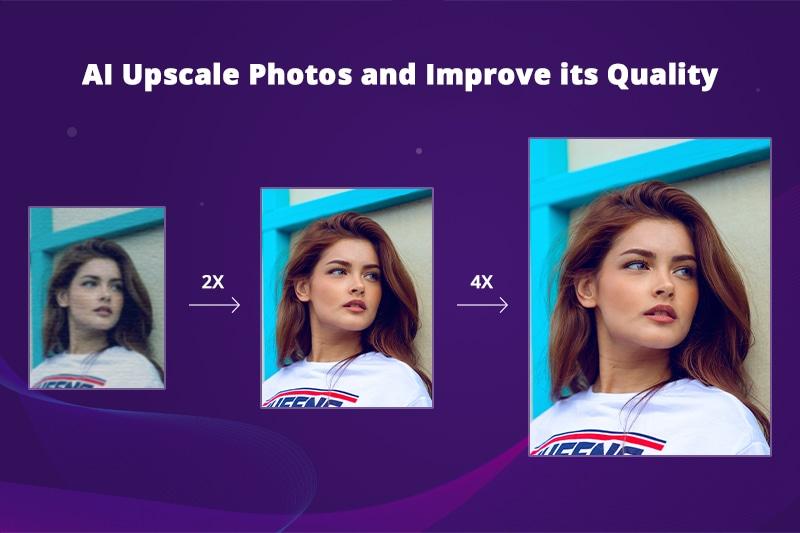Estimated reading time: 4 minutes
272 Views
With the rapid advancements in artificial intelligence (AI) and machine learning, it has become possible to upscale low-resolution images and significantly enhance their visual quality. Upscaling, also known as image enlargement or resolution enhancement, is the process of increasing the size and detail of an image while maintaining its clarity and minimizing distortion. In this article, we will explore the techniques and tools available for upscaling images using AI and how they can improve the overall visual experience.
Understanding AI-based Upscaling:
Traditional upscaling methods often result in pixelation and loss of image quality, as they merely interpolate the existing pixels to a larger size. AI-based upscaling, on the other hand, utilizes advanced machine learning algorithms to analyze and understand the content of an image. These algorithms then generate new pixels that are both plausible and visually appealing, resulting in a more realistic and detailed image.
Techniques for AI-based Upscaling:
There are several techniques employed for AI-based upscaling, and we will discuss two prominent ones:
Single-Image Super-Resolution (SISR):
Single-Image Super-Resolution focuses on enhancing the resolution of a single image. It involves training a deep neural network using a dataset of high-resolution and corresponding low-resolution images. The network learns to recognize patterns and features from the low-resolution images and then generates high-resolution counterparts. This technique is effective in upscaling images by adding missing details and improving overall sharpness.
Generative Adversarial Networks (GANs):
Generative Adversarial Networks have gained significant attention for their ability to generate high-quality images. GANs consist of two neural networks: a generator and a discriminator. The generator network synthesizes new images, while the discriminator network tries to differentiate between the generated images and real high-resolution images. Through an iterative training process, the generator learns to produce increasingly realistic and high-resolution images. GANs are particularly useful for upscaling images as they can generate visually appealing details that are missing in low-resolution versions.
Tools and Applications:
Several AI-powered tools and software have been developed to upscale images effectively. Some notable examples include:
- Topaz Gigapixel AI: This tool utilizes machine learning algorithms to upscale images while preserving their sharpness and clarity. It offers a user-friendly interface and a batch-processing option, making it suitable for photographers and graphic designers.
- Waifu2x: Originally designed for upscaling anime and manga images, Waifu2x has gained popularity for its impressive upscaling capabilities. It employs deep convolutional neural networks to enhance image details and reduce noise.
- Adobe Photoshop AI Upscaling: Adobe Photoshop, a widely used image editing software, has integrated AI upscaling capabilities. The AI Upscaling feature leverages machine learning to enlarge images while maintaining quality, offering an intuitive and familiar workflow for users.
Best Practices for Upscaling Images:
While AI-based upscaling can significantly improve image quality, it’s important to consider a few best practices:
- Choose the right algorithm or tool for the job, as different techniques may produce varying results depending on the content and characteristics of the image.
- Avoid excessive upscaling. While AI can enhance images to a certain extent, pushing it too far may lead to the generation of unrealistic details or artefacts.
- Evaluate the results critically. While AI algorithms can perform exceptionally well, they are not perfect. It’s important to review the upscaled images and make necessary adjustments manually if required.
AI-based upscaling offers an exciting opportunity to enhance the visual quality of low-resolution images. With techniques like Single-Image Super-Resolution and Generative Adversarial Networks, combined with powerful software tools, images can be upscaled while preserving clarity, adding missing details, and reducing pixelation. As AI continues to evolve, we can expect further advancements in image upscaling techniques, ultimately improving the overall visual experience across various domains.
For the latest tech news and reviews, follow Rohit Auddy on Twitter, Facebook, and Google News.





